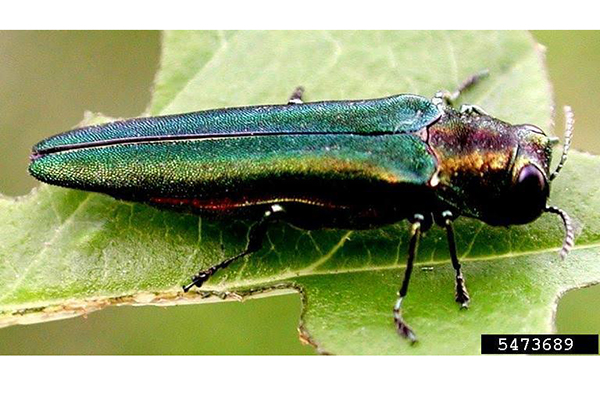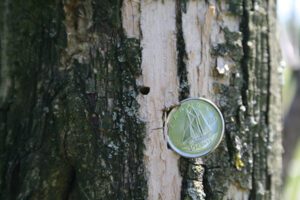Home »

Moving firewood spreads invasive species

Ahead of the Canada Day long weekend, the Invasive Species Council of BC (ISCBC) warns campers and nature lovers heading into the great outdoors: Moving firewood spreads invasive species. Keep it local.
In March 2024, B.C. confirmed its first detection of the emerald ash borer, a highly destructive invasive wood-boring beetle. With the Canadian Food Inspection Agency (CFIA) announcing the further expansion of the current emerald ash borer regulated area into the Province of B.C., it’s important to understand how everyone can help prevent the spread of invasive species.
Gail Wallin, ISCBC’s Executive Director: “One of the easiest things we can all do to prevent the spread of invasive species like emerald ash borer, Asian long-horned beetle, and spongy moth, is to not move firewood. We always urge folks to practice Buy Local Burn Local. It’s an easy way to make a big difference.”
Emerald ash borer was likely first introduced to North America by hitching a ride in shipping pallets from overseas. It is also unknowingly moved in firewood. Restricting firewood movement through the Buy Local Burn Local practice is one of the best defences in reducing the spread of invasive insects. Buy firewood at or near the destination where you’ll be burning it to ensure you are not introducing pests or diseases to the area. If you have firewood left over from your stay, leave it. Always avoid transporting firewood long distances.
Quick facts:
-

Emerald ash borer, larvae tunnels, Photo Credit: Troy Kimoto Emerald ash borer is small, measuring only 8.5-14 millimetres in length. A key ID feature is its metallic emerald-green colour, and unique narrow, bullet-shaped body.
- A telltale sign in tree bark is the D-shaped exit holes emerging adults leave behind and the S-shaped tunnels formed by the larva under the bark
- The emerald ash borer primarily destroys ash trees. It is not known to attack soft wood lumber species of trees such as pine and spruce.
- It is native to China and eastern Asia. It was first detected in Canada in 2002 and has now been confirmed in six provinces including BC, after a larva was found in Vancouver in March, 2024.
- This pest is regulated by the CFIA to protect Canada’s forests, urban trees and nurseries.
If you think you may have spotted emerald ash borer or signs of this invasive insect, submit a report online to the Canadian Food Inspection Agency.
Lead image: Emerald ash borer. Photo Credit: Leah Bauer, USDA Forest Service Northern Research Station, Bugwood.org
The Invasive Species Council of BC (ISCBC) is dedicated to keeping landscapes and communities free of invasive species. It provides a coordinated, province-wide approach to reducing the spread and the impact of invasive species in BC. ISCBC unites efforts throughout the province and collaborates with a variety of partners to develop unique solutions for the wide variety of ecosystems in BC.







